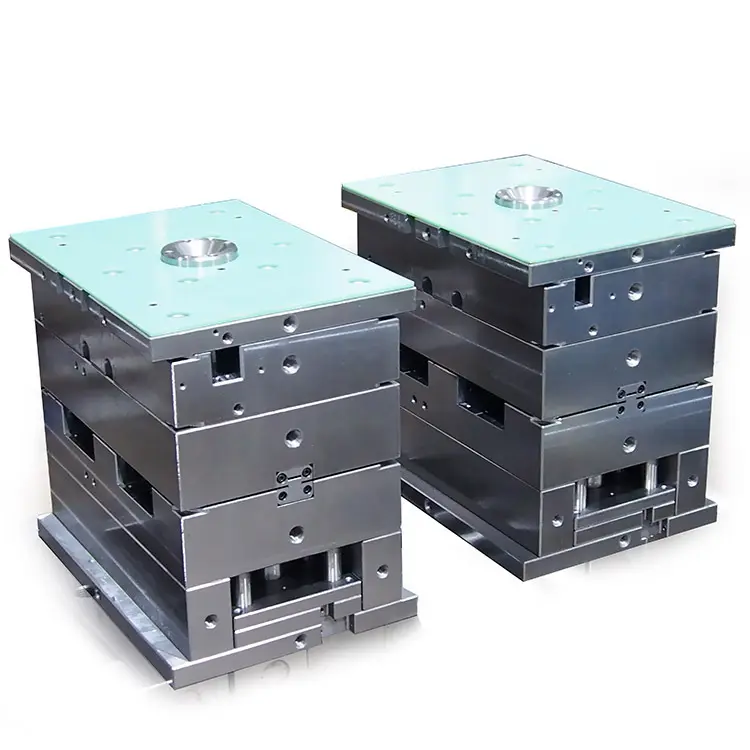Integrating Technology with Mold Base Design
The Importance of Mold Base Design
Mold base design is a critical aspect of the manufacturing process, particularly in injection molding. It serves as the foundation for the mold, ensuring that products are manufactured to precise specifications. In the competitive landscape of manufacturing, particularly in Korea, businesses must optimize mold base design to enhance efficiency, reduce costs, and improve product quality. Integrating advanced technologies into this process can revolutionize how designers approach mold making.
Modern Technologies in Mold Base Design
Incorporating modern technologies into mold base design offers a myriad of benefits. Here are some of the most impactful technologies that are being adopted:
- 3D Modeling Software: Programs like SolidWorks or Autodesk Inventor enable designers to create detailed 3D models of mold bases, allowing for better visualization and analysis.
- Finite Element Analysis (FEA): This simulation technique helps in predicting how a mold will react to various forces, crucial for ensuring durability and performance.
- Computer Numerical Control (CNC) Machining: CNC machines enhance precision in the manufacturing of mold components, reducing human error and increasing productivity.
- Rapid Prototyping: Technologies like 3D printing allow for quick prototypes, enabling faster validation of designs before moving to full-scale production.
- Industry 4.0 Practices: Integrating IoT and smart systems can optimize the mold design process through real-time data monitoring and automated adjustments, leading to enhanced efficiency.
Benefits of Technology Integration in Mold Base Design
Integrating technology into mold base design is not only about modernization; it also brings several tangible benefits:
- Increased Precision: Advanced design tools improve the accuracy of mold dimensions, which is critical for high-quality production.
- Reduced Lead Times: Faster design processes coupled with rapid prototyping mean that molds can be developed and put into production more quickly.
- Cost Efficiency: Automated processes reduce labor costs and material waste, making operations more cost-effective.
- Enhanced Collaboration: Digital tools enable better collaboration among designers, engineers, and manufacturers, ensuring that everyone is on the same page.
- Improved Scalability: With technology, adapting designs for different production scales becomes easier and more efficient.
Case Studies of Successful Technology Integration
Several companies in Korea and beyond have successfully integrated technology into their mold base design processes. Below are notable examples:
- Samsung Electronics: Leveraging 3D modeling and FEA, Samsung has improved the efficiency of its mold designs for consumer electronics, resulting in significant cost savings and enhanced product quality.
- Hyundai Motor Company: By implementing CNC machining technology, Hyundai has seen reductions in lead times for tool designs, accelerating their production timelines and enhancing vehicle manufacturing efficiency.
- LG Chem: Utilizing rapid prototyping has allowed LG Chem to validate new mold designs quickly, preventing potential issues before mass production begins.
The Future of Mold Base Design Technology
As technology continues to evolve, the future of mold base design is promising. Emerging trends such as AI-assisted design tools and machine learning algorithms will likely become integral components of the design process, automating complex calculations and offering design recommendations based on historical data. Furthermore, advancements in material science may lead to the development of stronger, lighter materials that enhance mold performance.
Implementing Technology in Your Mold Design Process
If you’re looking to integrate technology into your mold base design, consider the following steps:
- Assessment: Evaluate your current design processes and identify areas where technology can bring improvements.
- Invest in Technology: Acquire modern design software and CNC machinery suited for your needs.
- Training: Provide adequate training for your design team to effectively utilize the new technologies.
- Collaboration: Foster a collaborative environment where feedback and innovation are encouraged.
- Continuous Improvement: Regularly assess technology impacts and remain adaptable to new advancements.
Conclusion
Integrating technology with mold base design is not merely a trend; it is a necessary evolution in the manufacturing sector. The benefits are substantial, from improved precision and cost-efficiency to reduced lead times and enhanced collaboration. As we look to the future, companies that embrace these technological advancements will not only remain competitive in the Korean market but will also set the standard for excellence in mold base design and manufacturing.

